home vintage cameras index
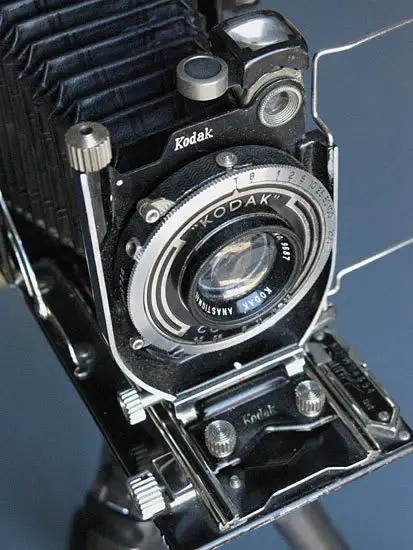
1932-40
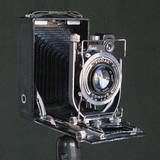
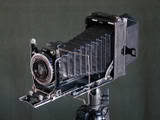
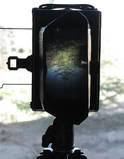
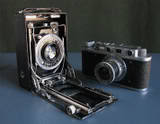
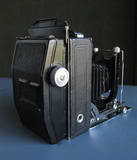
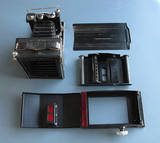
A user manual for the Recomar Nos. 18 and 33 is available at the Butkus site.
All the major camera manufacturers produced compact plate cameras at around the same time; Kodak's offerings, originally a Nagel design, were very competitive in regard to materials and craftsmanship. The Recomar 18 was equipped with a Kodak Anastigmat f-4.5/105mm lens and a Compur shutter with speeds from 1 to 1/250 secs., plus T and B settings. There was no front or back tilt capability, but the lens board could be shifted laterally and vertically. Three different view systems were available to the user: a ground glass back, a wire-frame viewfinder with a pop-up eye piece, and a swiveling reflex finder to which was attached a bubble level. The extended bellows could be racked out to produce a subject to image ratio of nearly 1:1.
My camera came to me clean and fully operational, but it lacked the reflex viewfinder. I found a junker with a good finder for a few dollars, so now have everything as originally configured except a working bubble level. I also have a Rada roll film adapter, and have only used that to make pictures with the camera. The adapter makes the camera about as convenient to shoot as any of the folding cameras of the same era if used with the reflex viewfinder. However, with the Rada adapter in place, the additional bulk interferes with proper aiming of the camera through the wire-frame viewfinder in the landscape position. I really got the camera with the intent of using it for close-up work using the ground glass back, so the limitation on the use of the wire-frame finder has not been a hindrance to me.
I've only put a few rolls of film through the Recomar since acquiring it a couple years ago. The results I've gotten from the camera so far have been inconsistent. Thinking that something might need adjusting, I devoted some time recently to make sure that the ground glass back and the roll film adapter were properly positioned at the film plane. I also verified that the infinity setting was correct with the use of a film plane target and an slr. I bought a new piece of ground glass and installed it in the film pack holder, but the brightness is not noticibly better, and the Zeiss ground glass back with the little fold-open hood is more convenient. In low light, or when dealing with strong reflections on the ground glass, I drape a large black cloth over me and the camera.
My conclusion at this point is that my dissatisfaction with the photos I've gotten from the Recomar has more to do with a lack of operator skills than with camera qualities. Except for tilts, the Recomar is a view camera and it demands a somewhat higher level concentration and attention to detail than I am accustomed to. Since I tend to use the camera mostly for close-up and macro work, that adds an additional level of complexity which also calls for greater self-discipline. I could spend some money and get a more modern medium-format camera, or I could use fine-grain film in one of my Pentax to do close-up photography, but I'm intrigued by the challenge of making pictures with this elegant little view camera that is really not significantly bigger when folded up than my Leica copy FED-1g.
Below are some photos from the Recomar 18. The first two were made soon after I acquired the camera, and the rest were shot recently in Albuquerque at home and in the Botanic Garden.
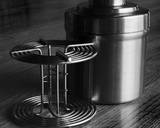

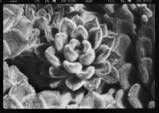
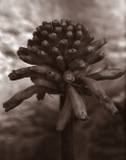
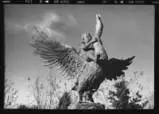
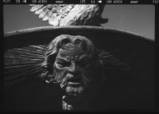
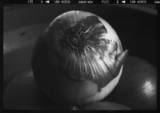
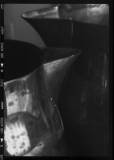
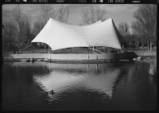
home vintage cameras index
 © mike connealy
© mike connealy